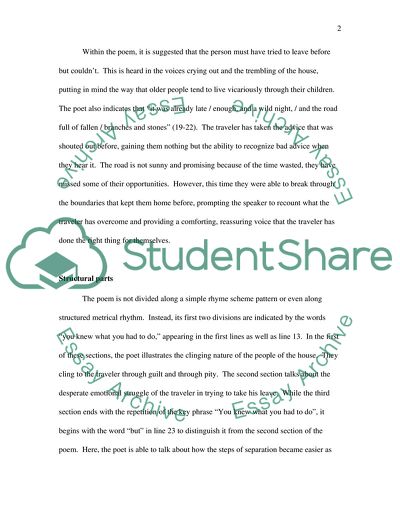Cite this document
(“Analyzing a Poem Essay Example | Topics and Well Written Essays - 1750 words”, n.d.)
Analyzing a Poem Essay Example | Topics and Well Written Essays - 1750 words. Retrieved from https://studentshare.org/miscellaneous/1540634-analyzing-a-poem
Analyzing a Poem Essay Example | Topics and Well Written Essays - 1750 words. Retrieved from https://studentshare.org/miscellaneous/1540634-analyzing-a-poem
(Analyzing a Poem Essay Example | Topics and Well Written Essays - 1750 Words)
Analyzing a Poem Essay Example | Topics and Well Written Essays - 1750 Words. https://studentshare.org/miscellaneous/1540634-analyzing-a-poem.
Analyzing a Poem Essay Example | Topics and Well Written Essays - 1750 Words. https://studentshare.org/miscellaneous/1540634-analyzing-a-poem.
“Analyzing a Poem Essay Example | Topics and Well Written Essays - 1750 Words”, n.d. https://studentshare.org/miscellaneous/1540634-analyzing-a-poem.


